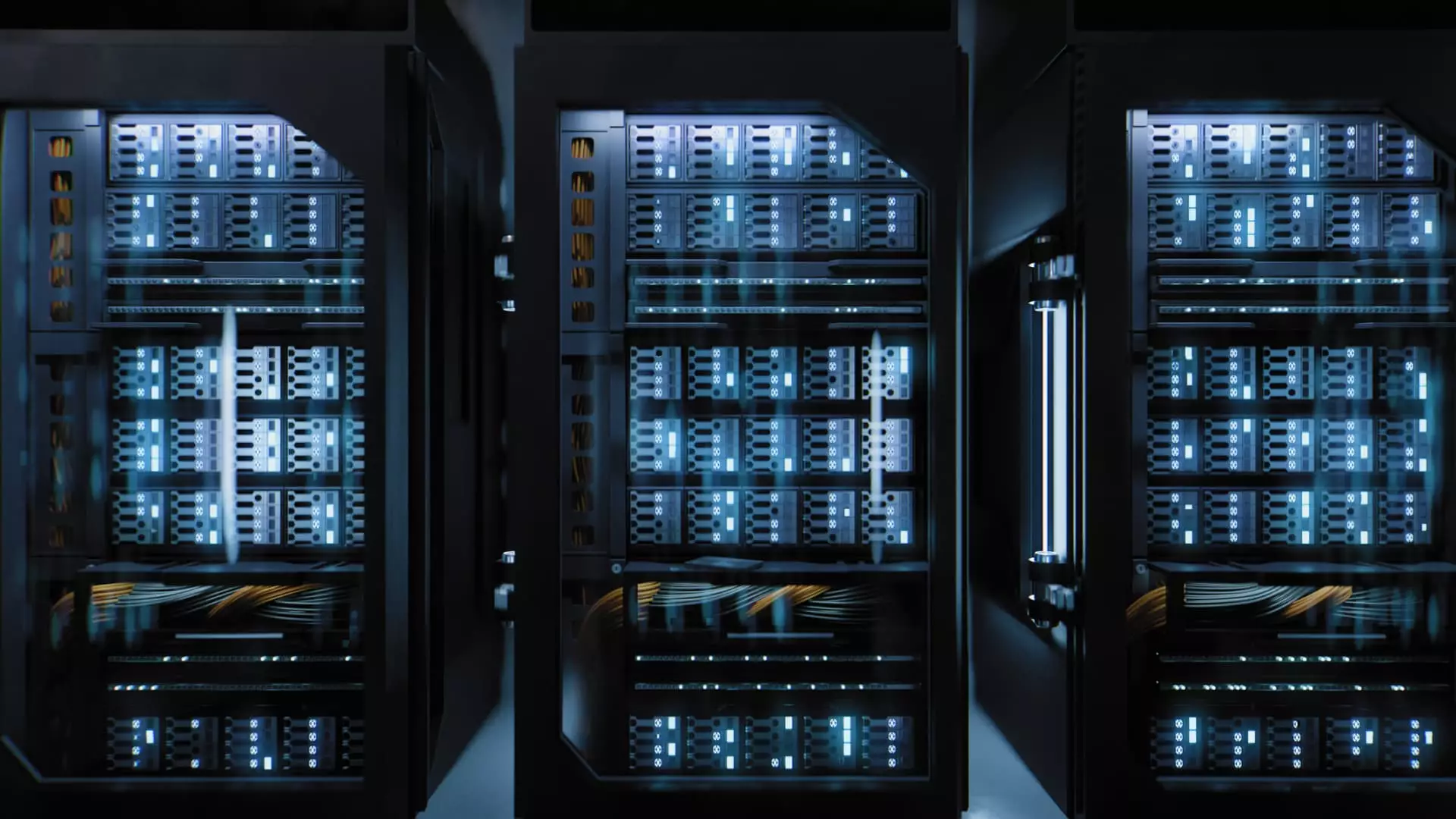The rapid advancement of artificial intelligence (AI) technology is creating a challenging landscape for data centers in Europe, merging high performance demands with environmental sustainability. As firms like Nvidia develop powerful chips that propel AI capabilities, developers are under pressure to redesign the cooling systems of these energy-intensive facilities to maintain efficiency. This juxtaposition of high energy consumption and the necessity for environmental responsibility leads to a critical examination of the pathways forward.
Goldman Sachs has forecasted a staggering 160% growth in demand for data centers by 2030, largely attributed to the burgeoning AI sector. Such growth, however, poses a significant threat to Europe’s objectives of decarbonization and energy efficiency. With the adoption of high-powered chips, particularly graphics processing units (GPUs) necessary for training advanced AI models, energy usage in data centers is set to escalate sharply. One GPU can draw up to 120 kilowatts in just a square meter, a staggering figure that approximates the energy demands of multiple homes. The implications of this demand are multifaceted: while AI promises technological advancements, it simultaneously strains existing energy infrastructures.
As data centers become implicated in the environmental discourse, the need for effective cooling technologies has never been greater. New GPU technologies generate significant amounts of heat, necessitating the utilization of colder water for optimal performance and cooling efficiency. This requirement conflicts with recent initiatives by the European Commission, which aims to enhance energy efficiency across the sector, targeting a reduction in energy consumption by 11.7% by 2030. The challenge lies not only in cooling but also in how these advancements are integrated into existing regulations that demand sustainability.
Industry experts such as Michael Winterson, chair of the European Data Center Association (EUDCA), express concern that the push to lower water cooling temperatures could lead to a regression to the unsustainable practices of previous decades. Indeed, as AI begins to dominate the market, particularly in the United States, Europe faces an uphill battle to balance economic growth with ecological integrity, especially since the drive toward market domination often sidelines sustainable practices.
The need for collaboration among stakeholders is vital. Major vendors in Europe are overwhelmed by requests from U.S. chip manufacturers to modify cooling approaches, calling into question the logic behind such demands when juxtaposed against established sustainability criteria. This paradox illustrates the divergence between American chipmakers’ operational models and European regulatory expectations. For long-term sustainability, there is an urgent need to reconcile these differences.
European firms are increasingly investing time and resources to engage with regulatory bodies to address energy consumption and cooling needs. For instance, Schneider Electric, a key player in the energy management sector, is working closely with the European Commission to discuss viable energy solutions for AI data centers. As cooling systems account for a substantial portion of overall energy consumption, innovative cooling technologies and methodologies must emerge to align with the EU’s energy goals.
Forecasting the Future: Will the AI Expansion Be Sustainable?
As the AI boom progresses, the path forward is fraught with complexity. Stakeholders must confront several conflicting demands: the need for higher-density computing and efficiency standards and the fundamental requirement for reliable energy sources. Companies like Nebius are investing heavily in AI infrastructure, showcasing a commitment to technological advancement while recognizing the parallel obligations of environmental stewardship.
Experts predict that without a cohesive strategy, the information technology sector will experience a disconnect between market demands and ecological commitments. The urgency to develop energy-efficient solutions is paramount, warranting a holistic approach that considers the entire lifecycle of data center operations.
The intersection of AI technology and data center infrastructure offers both challenges and opportunities for transformation. Critical discussions among tech developers, regulatory bodies, and energy providers must center on creating innovative cooling solutions that minimize energy consumption without sacrificing performance. Collaborations may also assist in aligning the tech sector’s ambitions with the European Union’s goals of carbon neutrality and efficient resource utilization.
As data centers evolve to support the growing demands of AI technology, a conscious effort must be made to prioritize sustainability. The time is ripe for systemic changes that promote energy efficiency and ecological responsibility. Stakeholders must navigate this complex landscape carefully, as their choices today will propel the future of technology and the environment in tandem forward.

Leave a Reply